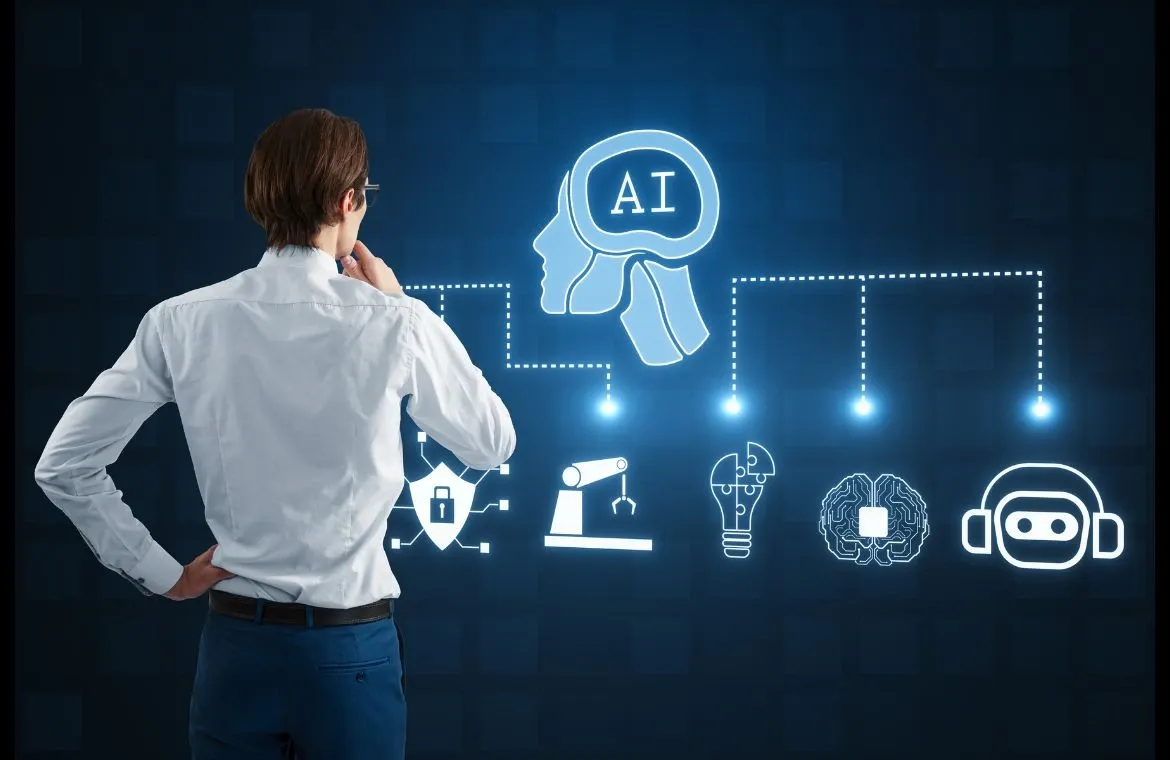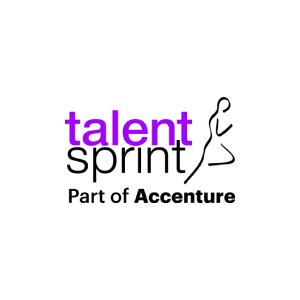How AI Works: AI Techniques and What Contributes to AI Development

“Any sufficiently advanced technology is indistinguishable from magic." – Arthur Clarke, British Fiction Writer.
Artificial Intelligence (AI) is the embodiment of this statement. From algorithms that can predict data patterns to stimulating human intelligence, AI can do everything. Things that once felt like science fiction - computers diagnosing diseases better than human doctors, self-driving cars, virtual assistants being human companions, and many more - are now a reality, all thanks to AI.
What truly makes AI magic is not its ability to do complex tasks but its ability to seamlessly integrate into our everyday lives. Artificial intelligence (AI) is getting closer and closer to the heights and depths of human intelligence. This intelligence comes from building agents that act rationally. That is where we can define the AI technique as a composite of three areas. It is a type of method built on knowledge that organizes and uses this knowledge and is aware of its complexity.
Let’s dig in to break down the AI techniques and understand what contributes to AI development.
AI Techniques
Artificial intelligence operates on the foundation of techniques that allow machines to copy human intelligence. These techniques will enable the system to understand, learn, and improve over time. Here’s a detailed account of the methods:
Search in AI
Artificial intelligence (AI) agents perform a search algorithm in the background to complete their expected tasks. That’s why search is a significant building block for any artificial intelligence (AI) solution.
Any artificial intelligence (AI) has a set of states, a start state from where the search begins, and a goal state. By the use of search algorithms, the solution reaches from the start state to the goal state.
This is done through various approaches:
- Blind Search: This is a basic form of search for problem-solving
- Informed and Uninformed Search: In this search, algorithms either utilize no additional information (uninformed) or use heuristics (informed)
- Depth First Search: First, the depth of the problem is explored to determine how many layers are to the problem
- Breadth First Search: In this search, all nodes of the current depth of search are explored before moving to the next.
- Uniform Cost Search: It explores the least costly nodes and moves to expensive ones.
- Search Heuristics: This technique supports the system to find the most optimum solution to the problem.
By utilizing these techniques, AI systems gain precise knowledge about the problem in question.
Knowledge Representation in AI
Once the search is complete, the collected information needs to be understood. To process and act upon this information, AI agents need to first understand the information, which can be achieved through knowledge representation. In knowledge representation, beliefs and facts are modeled in a manner that they assist in intelligent decision-making.
There are various forms of knowledge representation, some of which are:
- Declarative Knowledge: Facts and information are explicitly expressed
- Procedural Knowledge: This is like “how-to” guides for performing tasks
- Meta Knowledge: Knowledge about how to reason
- Heuristic Knowledge: Knowledge gained via experience
- Structural Knowledge: Relationships between concepts, like networks or heuristics, within the information
Abstraction in AI
Abstraction helps in simplifying the complexity of AI by making it more comprehensible and manageable. It helps in addressing the issue of the “black box”. Opacity is a massive barrier to gaining confidence and the adoption of artificial intelligence (AI).
In abstraction, the system is structured into many manageable layers, which reduces the cognitive load on developers and fosters transparency. Thus improving trust and confidence in AI.
There are various areas under which the AI techniques of search, knowledge representation, and abstraction span. Some of these are listed below:
Data Mining
This process is associated with the extraction of valuable patterns and insights from large datasets. The application of this process can be seen in the retail sector, where retailers use this process to understand the patterns in customer data and predict customer behavior.
Machine Vision
It enables the system to see images and, thus, analyze and interpret visual data. Thus, with this ability, AI is able to analyze all kinds of data. Its key application can be seen in the case of autonomous vehicles, where the system can analyze the outside environment for navigation.
Machine Learning
This system does not explicitly require programming. It can learn from the past data and its environment and improve over time. The personalized recommendations on streaming platforms and e-commerce websites are a form of machine learning, as they learn customer preferences on the basis of their search history or purchase/watch history. If you're curious to explore the concepts of machine learning, check out the IIIT Hyderabad AI course.
Natural Language Processing
This enables the AI system to understand the human language. Thus, computers can understand and respond to the languages known to humans. Its application can be seen in virtual assistants and chatbots. If you're someone interested in exploring it further, you can consider enrolling in the IISc Generative AI course, which can equip you to take up the lucrative role of a Prompt Engineer. Demand for prompt engineers has increased ever since the introduction of ChatGPT, and with adequate, prompt engineering skills, you can easily acquire a high-paying job.
Robotics
One of the key contributions of AI is robotics. It is the integration of AI with computer systems that enables the system to perform human tasks. Robotics play a crucial role in production/manufacturing sectors, where production can be carried out with high precision, and human accidents can be avoided.
Contributions to AI Development
When we think of artificial intelligence (AI), we think of machines, computer systems, algorithms, and models trying to get closer to human intelligence. Today, this space straddles many areas, like natural speech recognition, expert systems, machine learning, general AI applications, and more. The future, however, is mapped towards singularity, and there is hope that AI will exceed our expectations and assumptions and that we will enter the realm of super AI.
To get there, a lot of pieces of the AI puzzle would have to come together. Here are a few important ones.
Big Data Availability
AI is nothing but intelligence that learns, re-learns, and reinforces its learning through the data that it gets. This data can either be specifically fed into the modes or designed to collect this data independently. Hence, the volume and quality of data are extremely important in determining the efficacy and relevance of AI for any purpose.
Big data is a new form of information asset, and it requires massive processing models and the right computing muscle to take care of its flow, velocity, scale, and density. For Big Data to expand and extend human intelligence through AI, we would need to master many dimensions of Big Data. They would include, but would not be limited to, speech recognition, IoT and sensor data, image recognition, unstructured data, and real-time data of many formats.
The space of Big Data is growing rapidly and in multiple directions. According to Fortune Business Insights, the global big data market analytics market size is valued at approximately USD 348 billion in 2024, which is projected to reach USD 924.39 billion in 2032. This will help the companies increase their operational efficiency, and it will definitely help AI systems improve and grow.
Continuous Innovation
Continuous innovation significantly contributes to the development and improvement of AI. AI is much more than the fundamentals of the technology that power it. Its real impact and possibility lie in the way it is augmented consistently. It has to get the right research and creative impetus to explore new models, processing modes, algorithm designs, and enablers. There are many constraints for AI as we see them today. They deter many enterprises from leveraging AI to its full potential.
This implies that continuous innovation is mandatory to make AI work to its full potential. Some expected results in the field of AI with continuous innovation include the following -
- Breakthroughs: Continuous innovations and research can help engineers experiment with new AI architectures, which may result in breakthroughs, like natural language processing and computer vision.
- Increased Adaptability: AI heavily relies on data; however, data patterns may not remain consistent, which can make it difficult for AI to work with them. With continuous innovation and improvements, AI systems can be made capable of adapting to changes and starting to work with new systems.
Tech Professionals
Tech professionals are at the very heart of AI development, as they are the driving force behind innovations in the field of AI. From software engineers working on the development of machine learning to data scientists collecting and curating datasets to train AI, every tech professional contributes to AI.
There are tons of examples to show the contribution of tech professionals, like the contributions of engineers in OpenAI, who created ChatGPT and revolutionized natural language processing. Additionally, the AI team at Tesla developed autonomous vehicle technology and made self-driving vehicles, which was once science fiction, a reality.
These efforts and discoveries are proof that tech professionals are transforming industries with their significant contributions to AI’s development.
Algorithm Advancements
Companies are still not sure about handling a lot of AI ramifications. That’s where the algorithms need to evolve and iron out these kinks. Businesses are still worried about abort risks like explainability, privacy, equity and fairness, and cybersecurity. Additionally, privacy, fairness, and ethics are among the top concerns associated with AI use.
Thus, at this moment, there is a need for algorithms that can address these issues and bolster the excitement that enterprises have towards AI. If all these ducks fall in a row, AI will swim to new shores of possibility and impact soon.
The advancements in algorithms can help AI transform industries, solve complex problems, and redefine human productivity, which can change the world of business forever.
Investments
A lot hinges on how excited the top leaders of an organization feel about AI. Investments will drive more innovation and more capabilities ahead. Businesses have realized the importance of AI in helping them increase their revenues, which is why they are keen on increasing their investments in AI research.
For instance, Google DeepMind invested billions of dollars in AI development, including AI drug discovery business with AlphaFold. On the other hand, Netflix is willing to pay a hefty salary of around USD 900,000 to machine learning project managers, as the company knows how it can benefit and increase business with AI.
Realizing the potential of further development, tech giants like NVIDIA and Google are willing to support AI start-ups. For instance, OpenAI competitor AI21 Labs was able to raise USD 155 million from its investors. These investments are expected to support AI development in the form of faster processing models and real-world applications.
Processing Power
AI depends a lot on how models use data, learn, and apply their intelligence. That is where AI would need higher and wider processing alternatives. Especially in the area of real-time data. The adoption of deep learning - a type of machine learning that uses neural networks and can sometimes deliver superior results.
However, for businesses, deep learning is still in the pilot stage. So, the advancements in deep learning and investments in its adoption can help businesses realize the greatest outcomes from AI.
At this point, it is clear that AI is not just for tech professionals and developers; leaders and decision-makers within the business need to understand its potential. The IIM Calcutta AI for Leaders course is perfect for senior-level managers who wish to see themselves as a business leader in the near future. This course can help them build the capability to integrate AI seamlessly into business processes.
Ending Note
It was once thought that AI would replace humans. However, AI’s introduction is just like any other industrial revolution, which replaced old jobs with new jobs. The adoption of AI by businesses is creating new jobs, and to be ready for these jobs, professionals are expected to acquire adequate skills and knowledge needed for these professional roles.
Businesses are increasingly investing in the development of AI, which includes investments in AI research, refining big data, subscribing to the right platforms, and acquiring the right talent for the organization. According to a 2024 LinkedIn report, demand for AI-specialized roles has increased by 74% in the last 4 years, and around 97 million new jobs will be created in 2025.
So, what are you waiting for? Get yourself enrolled in one of our AI courses to make your career future-proof.

TalentSprint
TalentSprint is a leading deep-tech education company. It partners with esteemed academic institutions and global corporations to offer advanced learning programs in deep-tech, management, and emerging technologies. Known for its high-impact programs co-created with think tanks and experts, TalentSprint blends academic expertise with practical industry experience.



